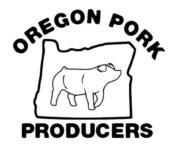Pork producers have enhanced feeding and breeding practices to deliver leaner options for today’s health conscious consumers. Did you know why pork now has a reputation as a white meat? It’s due to the fact that many lean pork cuts are similar in fat to a skinless chicken breast.
Vitamins and Minerals in Pork
Daily Values are listed on food labels. They tell us how much of various nutrients we should consume each day. The following information is based on a 3-ounce serving of pork. As you can see, these key nutrients make pork a nutrient-dense food!
Leanest Cuts of Pork
The cuts below meet the guidelines for “lean” (less than 10 g fat, 4.5 g saturated fat and 95 mg cholesterol) with pork tenderloin meeting the guidelines for “extra lean” (less than 5 g fat, 2 grams of sat fat and 95 mg cholesterol)
The tenderloin is the leanest cut of pork – a 3-ounce serving contains 120 calories and 2.98 grams of total fat – as lean as a skinless chicken breast. Other lean cuts (based on a 3-ounce cooked serving) include boneless loin roast with 147 calories and 5.3 grams of fat; boneless loin chops with 153 calories and 6.2 grams of fat, and boneless ham (extra lean) with 123 calories and 4.7 grams of fat. A 2-ounce serving of Canadian-style bacon contains 86 calories and 3.9 grams of fat.
How Pork Compares to Other Meats
How does pork compare to other meats for fat, calories and cholesterol? Pork today compares favorably for fat, calories and cholesterol with many other meats and poultry. Many cuts of pork are as lean or leaner than chicken and meet the government guidelines for “lean” or “extra lean.” Any cuts from the loin – like pork chops and pork roast – are leaner than skinless chicken thigh, according to U.S. Department of Agriculture data. Pork steaks or roasts from the leg (“fresh ham”) are also lean choices. See Serving Sizes and Nutritional Profiles of Lean Meats
More Pork Information
For more information visit Pork and Health.
